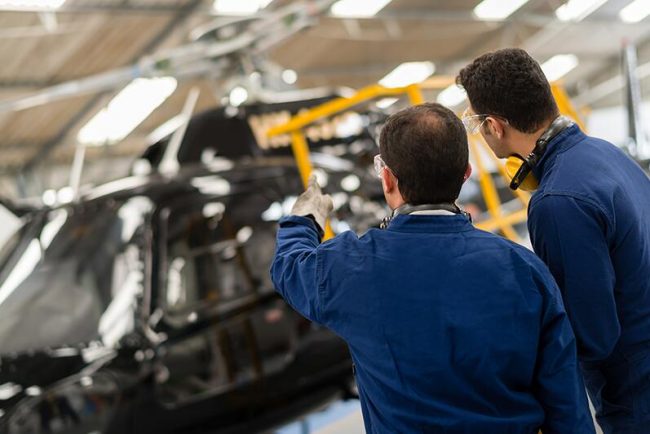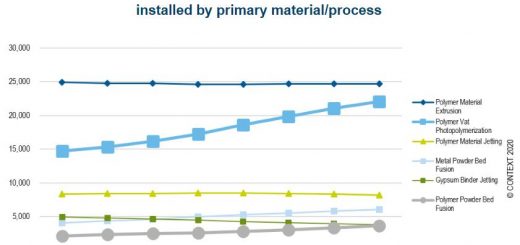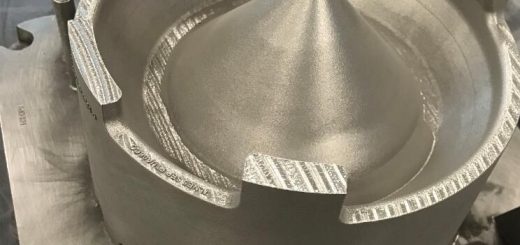AI Technology Addresses Parts Accuracy, A Major Manufacturing Challenge in 3D Printing for $7.3 Billion Industry
Automated machine learning tool could advance additive manufacturing in shape complexity, waste reduction and reduce manufacturing costs.

Researchers at Purdue University and the University of Southern California have developed automated machine learning technology to help improve additive manufacturing. (Stock photo)
WEST LAFAYETTE, Ind. – Imagine using machine learning to ensure that the pieces of an aircraft fit together more precisely, and can be assembled with less testing and time. That is one of the uses behind new technology being developed by researchers at Purdue Universityand the University of Southern California.
“We’re really taking a giant leap and working on the future of manufacturing,” said Arman Sabbaghi, an assistant professor of statistics in Purdue’s College of Science, who led the research team at Purdue with support from the National Science Foundation. “We have developed automated machine learning technology to help improve additive manufacturing. This kind of innovation is heading on the path to essentially allowing anyone to be a manufacturer.”
The technology addresses a current significant challenge within additive manufacturing: individual parts that are produced need to have a high degree of precision and reproducibility. The technology allows a user to run the software component locally within their current network, exposing an API, or programming interface. The software uses machine learning to analyze the product data and create plans to manufacture the needed pieces with greater accuracy.
“This has applications for many industries, such as aerospace, where exact geometric dimensions are crucial to ensure reliability and safety,” Sabbaghi said. “This has been the first time where I’ve been able to see my statistical work really make a difference and it’s the most incredible feeling in the world.”

This image illustrates the actual predictions of geometric shape deviations for 3D vertical semi-cylinders that are generated from Purdue University machine learning technology. (Image provided)
The researchers have developed a new model-building algorithm and computer application for geometric accuracy control in additive manufacturing systems. Additive manufacturing, commonly known as 3D printing, is a growing industry that involves building components in a way that is similar to an inkjet printer where parts are ‘grown’ from the building surface.
Additive manufacturing has progressed from a prototype development tool to one that can now offer numerous competitive advantages. Those advantages include shape complexity, waste reduction and potentially less expensive manufacturing, compared to traditional subtractive manufacturing where the process involves starting with the raw material and chipping away at it to produce a final result.
Wohlers Associates estimates that additive manufacturing is a $7.3 billion industry.
“We use machine learning technology to quickly correct computer-aided design models and produce parts with improved geometric accuracy,” Sabbaghi said. The improved accuracy ensures that the produced parts are within the needed tolerances and that every part produced is consistent and will perform that same way, whether it was created on a different machine or 12 months later.
Sabbaghi said the Purdue technology also allows users to create complex designs that would not be possible with traditional manufacturing processes. Other members of the research team at Purdue include Raquel Ferreira, a graduate student, and Kevin Amstutz, a data analyst. Qiang Huang from the Daniel J. Epstein Department of Industrial and Systems Engineering at the University of Southern California is the lead PI on the collaborative NSF grant.
Their work aligns with Purdue’s Giant Leaps celebration, acknowledging the university’s global advancements in artificial intelligence as part of Purdue’s 150th anniversary. This is one of the four themes of the yearlong celebration’s Ideas Festival, designed to showcase Purdue as an intellectual center solving real-world issues.
The researchers are working with the Purdue Office of Technology Commercialization to patent the innovation, and they are looking for partners to continue developing it.
Source:PURDUE University




Recent Comments